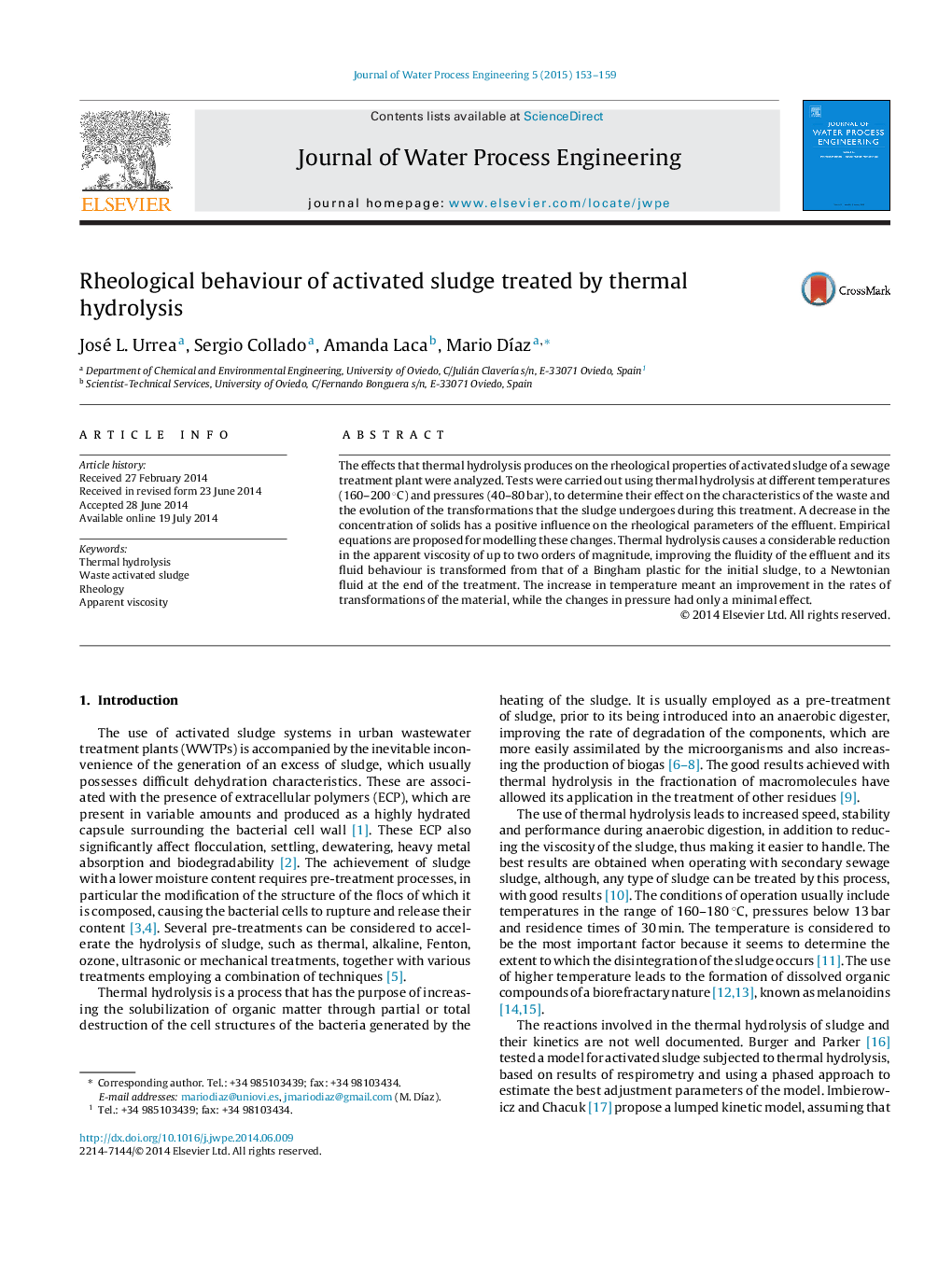| کد مقاله | کد نشریه | سال انتشار | مقاله انگلیسی | نسخه تمام متن |
|---|---|---|---|---|
| 232686 | 465297 | 2015 | 7 صفحه PDF | دانلود رایگان |
• Thermal hydrolysis improves the rheological characteristics of sewage sludge.
• Increase of temperature improved the transformation rate of the sludge.
• Increase of pressure does not change the final rheology of the sludge.
• Thermal hydrolysis reduces the apparent viscosity in two orders of magnitude.
• Transformation of the flow from a Bingham plastic to a Newtonian fluid.
The effects that thermal hydrolysis produces on the rheological properties of activated sludge of a sewage treatment plant were analyzed. Tests were carried out using thermal hydrolysis at different temperatures (160–200 °C) and pressures (40–80 bar), to determine their effect on the characteristics of the waste and the evolution of the transformations that the sludge undergoes during this treatment. A decrease in the concentration of solids has a positive influence on the rheological parameters of the effluent. Empirical equations are proposed for modelling these changes. Thermal hydrolysis causes a considerable reduction in the apparent viscosity of up to two orders of magnitude, improving the fluidity of the effluent and its fluid behaviour is transformed from that of a Bingham plastic for the initial sludge, to a Newtonian fluid at the end of the treatment. The increase in temperature meant an improvement in the rates of transformations of the material, while the changes in pressure had only a minimal effect.
Journal: Journal of Water Process Engineering - Volume 5, April 2015, Pages 153–159
